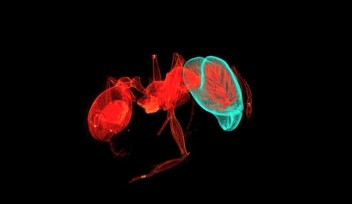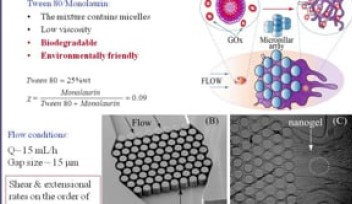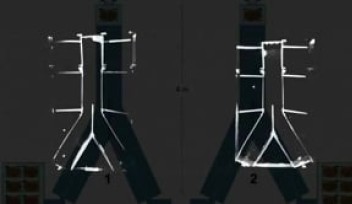"Towards Image-Based Systems Biology" by Dr. Eugene W. Meyers
OIST Presidential Lecture Series
"Towards Image-Based Systems Biology" by Dr. Eugene W. Meyers
September 25, 2018
ABSTRACT
Our group has been actively pursuing the idea that with great microscopes and great computer science we will be able to build digital models or atlases of the individual cells of a small organism, such as a worm or fly embryo, operating through time. Moreover, microscope observations of glowing, fluorescently-labelled molecules within each cell will give us information about the molecular state of every cell in the atlas so that we can begin to investigate how they are coordinating their activity within the subject organism. We believe that the resulting ability to inspect these atlases from any vantage point in space and time, and as a cellular system, will lead to many discoveries about the nature of the genetic control of the development and functioning of an organism.
Achieving the technological goal will require advances in microscopy, advances in computer vision and image analysis, and last, but not least, advances in systems for curating the data. Our group is striving to make advances in all three facets, and we will present our progress to date. With a series of examples, we will make the following points:
1. The need for a curation system that allows a human user to fix mistakes in the output of the computer analysis is essential, and such a system must be leveraged, allowing the correction of several mistakes with a single clue, and have attentional focusing, bringing the eye of the user to the locations in the model that potentially need fixing.
2. Better imagery, especially deep into tissues, will only be obtained with microscopes that (a) employ powerful signal processing, (b) can automatically adjust the microscope components controlling the image capture (e.g. focus), and (c) can effectively shape the excitation beams and camera image with adaptive-optics mirrors whose shape can be adjusted dynamically under computer control. We have recently had considerable success with deep neural nets and a self-adjusting light-sheet microscope.
3. An emerging trend is to make microscopes “smart”, in that they have an on-board artificial intelligence (AI) that analyzes images while they are being acquired and based on the analyses, makes decisions about what part of an object to image and how to image it in the next time period. There are many interesting design possibilities in this sphere, a few of which we will present.
SHORT BIOGRAPHY
In 2012 Gene Myers joined a growing group of computational biologists in Dresden as the founding director of a new Systems Biology Center that is being built as part of an extension of the Max-Planck Institute of Molecular Cell Biology and Genetics (MPI-CBG). His group focuses on engineering specialized light microscopes for cell biology and analyzing the imagery produces by such microscopes. Previously Gene had been a group leader at the HHMI Janelia Farm Research Campus (JFRC) since its inception in 2005. Gene came to the JFRC from UC Berkeley where he was on the faculty of Computer Science from 2003 to 2005. From 1998 to 2002 he was the Vice President of Informatics Research at Celera Genomics where he and his team determined the sequences of the Drosophila, Human, and Mouse genomes using the whole genome shotgun technique that he advocated in 1996. Prior to that Gene was on the faculty of the University of Arizona for 17 years and he received his Ph.D in Computer Science from the University of Colorado in 1981.
His research interests include the design and analysis of algorithms for problems in computational molecular biology, image analysis of bioimages, and light microscopy with a focus on building models of the cell and cellular systems from imaging data. He is best known for the development of BLAST
-- the most widely used tool in bioinformatics, and for the paired-end whole genome shotgun sequencing protocol and the assembler he developed at Celera that delivered the fly, human, and mouse genomes in a three year period. He has also written many seminal papers on the theory of sequence comparison.
He was awarded the IEEE 3rd Millenium Achievement Award in 2000, the Newcomb Cleveland Best Paper in Science award in 2001, and the ACM Kanellakis Prize in 2002. He was voted the most influential in bioinformatics in 2001 by Genome Technology Magazine and was elected to the National Academy of Engineering in 2003. In 2004 he won the International Max- Planck Research Prize and in 2005 was selected as one of two distinguished alumni (with David Haussler) at his alma-mater, the University of Colorado. In 2006 Gene was inducted into Leopoldina, the German Academy of Science and awarded an honorary doctorate at ETH, Zurich.
Copyright OIST (Okinawa Institute of Science and Technology Graduate University, 沖縄科学技術大学院大学). Creative Commons Attribution 4.0 International License (CC BY 4.0).














